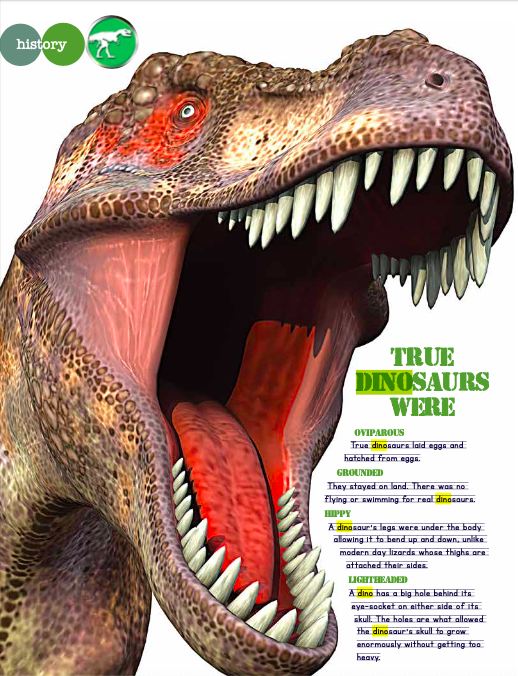
For years, our history books lumped prehistoric animals together and called them the Greek word for “terrible lizard”
DINOSAUR
When very little was known about the large, prehistoric, and extinct creatures, we classified all of them as dinosaurs. It remained that way for years, until the 18th century palaeontologist George Cuvier began his work on comparative anatomy.
The science developed rapidly in the 19th century. The experts noted that the features that differentiated dinosaurs and the rest of the prehistoric animals were particularly obvious in the structure of their heads and in the way their legs were attached to their huge bodies.
It became obvious that though there were many kinds of dinosaurs with these traits, none of them could swim or fly. Additionally, all of them were hatched from eggs.
VS. NON-DINOSAUR

Prehistoric Poop
Would you spend tens of thousands of dollars to buy a piece of poo? What if it was poo that came from a dinosaur? Pieces of preserved dino dung, also called coprolites, are extremely valuable to scientists. Since we can’t observe the eating habits of living dinosaurs, coprolites are the only clues we have to understand what was going on in the stomach of these ancient creatures.

Tell-tale Turds
Inside every poo, there are little bits of food that aren’t entirely digested. Palaeontologists can study the pieces of food fossilized inside coprolites to figure out what the dinosaur had been eating. This is how scientists discovered that some Hadrosaurs ate large quantities of rotting wood, and that some Silesaurus picked at small invertebrates, much like birds do in our era. Thanks to fragments enclosed in coprolites, scientists were able to learn that Tyrannosaurus Rex devoured their prey whole, including the bones!
Beyond what was eaten, scientists can also look at coprolites to learn about how the dinos’ digestive systems worked. By analyzing various parts of the coprolite, palaeontologists can learn all kinds of information, including how much the dinosaur chewed its food, how often it ate, and how much acid was in it’s stomach.
Coprolites
Coprolites also tell us that some dinosaurs suffered from nasty tummy troubles: they were infected with parasitic worms! Eggs and traces of burrows have been found in dung from many dinos including Iguanodun and Brachylophosaurus.
These clues tell us that the parasites were living inside the digestive tract of these dinos at the time they produced the poo. Scientists don’t know for sure how the parasitic worms affected the dinosaurs, but they can make an educated guess by looking at what happens to the modern reptiles infected with similar worms. Though we think of dinosaurs as being strong and mighty, many of these microscopic worms likely made them very ill.



